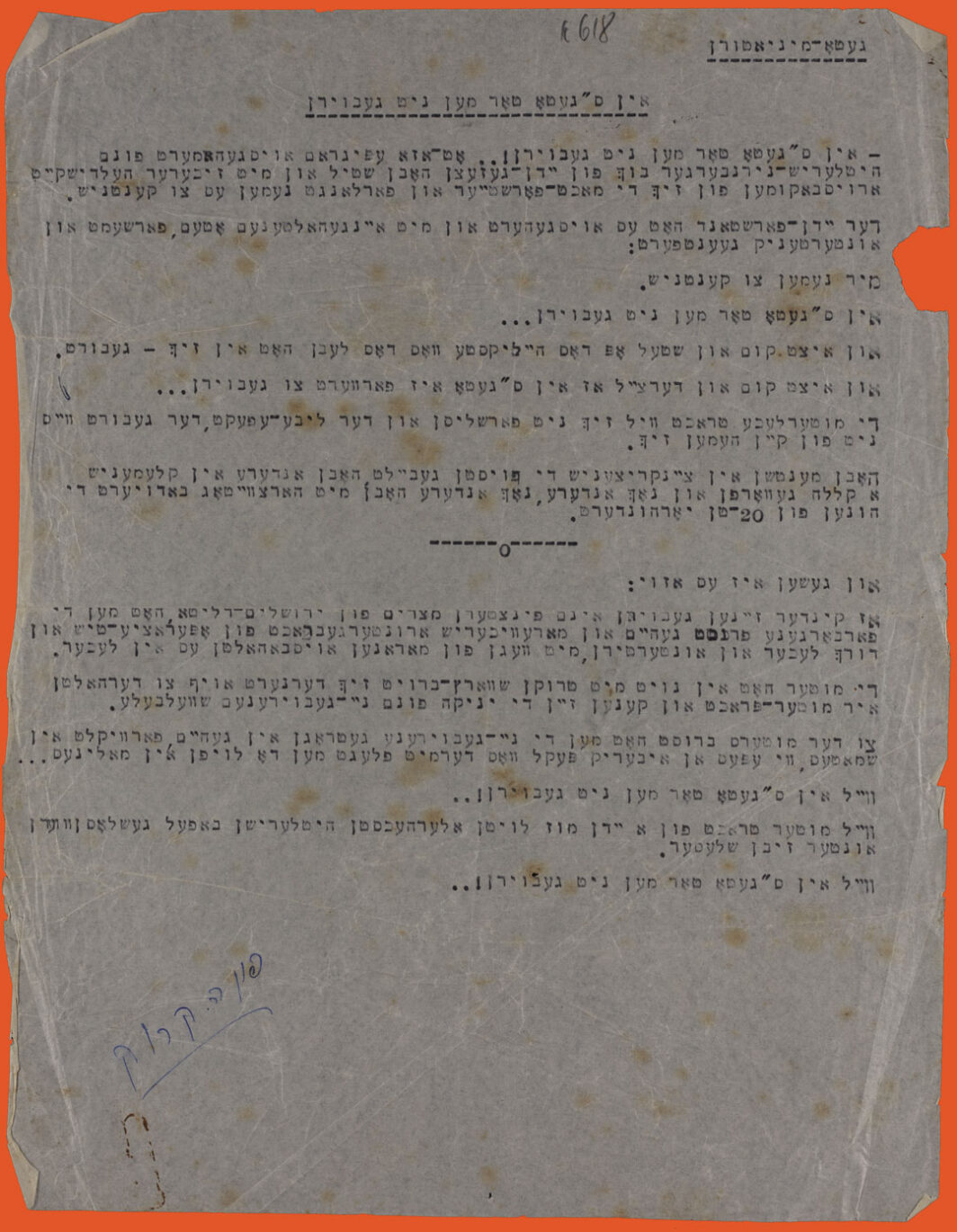
In the Ghetto It Is Forbidden to Give Birth
“Ghetto Miniatures” by the diarist Herman Kruk about the prohibition of birth in the Vilna Ghetto and how it still happens in secret. One example is the experience of the poet Avrom Sutzkever and his wife, Freydke. She gave birth to their child in the Vilna Ghetto hospital and the Nazis murdered the baby right away. Full translation below:
Ghetto Miniatures
In the Ghetto it is Forbidden to Give Birth
“In the Ghetto it is forbidden to give birth.” That is the epigram that the Representatives of Authority extracted from the Hitler-Nuremberg Book of Laws Concerning the Jews, and serenely and confidently issued, and demanded that note be taken.
The Representative of the Jews listened, held his breath and shamefully and submissively replied:
“We take note of it.”
In the Ghetto it is forbidden to give birth….
And now come and put a stop to what is holiest in life – birth.
And now come and announce that in the Ghetto it is forbidden to give birth….
The maternal womb does not want to shut itself and the feelings of love and birth know nothing of restraint.
Some people gritted their teeth and made a fist. Others in anguish uttered a curse. Still others deeply deplored the Huns of the 20th century.
And this is how it happened:
When children were born in the gloomy Egypt of the Lithuanian Jerusalem, the forbidden fruit was secretly and cunningly taken from the operating table and through holes and trap doors, like Marranos of old, hidden in holes.
The mother, in desperation, fed herself dry black bread to sustain her womb and to be able to give suck to the newborn little bird.
The newborn child was carried to the mother’s breast wrapped in rags, like an extra sack one carried when running into the maline [hiding place during raids].
Because in the Ghetto it is forbidden to give birth….
Because the Jewish womb must, according to the Hitler’s Highest Order, be locked with seven locks.
Because in the Ghetto it is forbidden to give birth.
(By Herman Kruk)
Digitization of this artifact has been made possible by the Edward Blank YIVO Vilna Online Collections project.